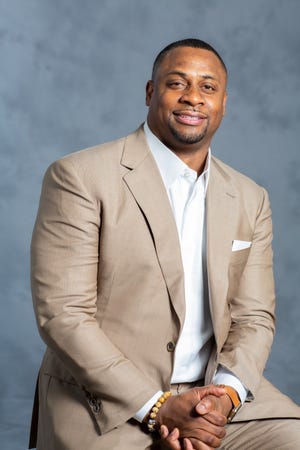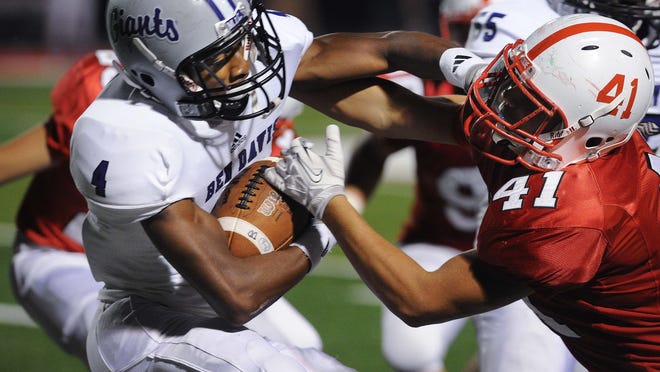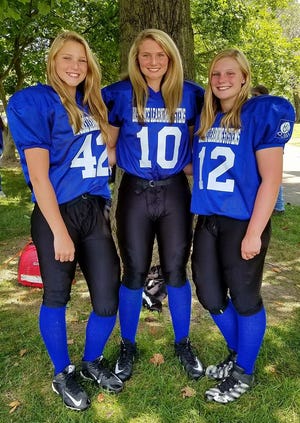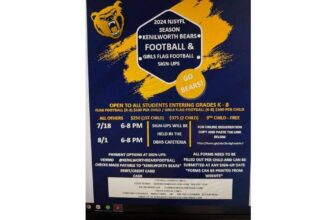Just taking off my NFL executive hat for a few minutes. This is me as a football dad.
I’m glad my kids played football and hope my grandkids get involved. But there are many parents who have concerns about the sport — especially with regard to player protection.
Let me start with this: Youth football today is very different from my earliest playing days in the ’70s and ’80s with the Morrisville Little Bulldogs and Pennsbury High. Advancements in the past 10 years alone have made tremendous improvements in how the sport is played; football is far more accessible for players of all sizes and skill levels, and it provides much greater protections for players of all ages.
Supporting brain health:NFL alumni chapter teams up with IU Health to study concussions
When I was a young player, football taught me resiliency and respect — for my coaches, my teammates and myself. It taught me how to communicate, respond to setbacks and find common ground with people that don’t look like me. Consider how success depends on every player on the field — 11 on each side of the ball — doing their jobs, play after play. No other sport has that dynamic.

These are lessons that remained with me in college, the NFL and beyond. My childhood teammates still apply them every day in their family and professional lives. And my children have grown immeasurably thanks to their participation in the game.
As parents of five, my wife and I are compelled to protect our kids, at all costs, from anything that might threaten their social or physical well-being.
We understand why some parents are on the fence. Our message to them? Give football another look.
The NFL has invested its resources in youth football organizations, including USA Football and the National Federation of State High School Associations (NFHS), which are driving ongoing innovations in player protection.
Together, we’ve applied what we’ve learned about head and neck injuries to promote proper playing techniques, develop baseline coaching certifications and institute an innovative development model that takes into account a player’s age, skill level and other variables, so kids can learn how to play the game in a way that’s smarter, and coaches can teach football with the priority of protecting them from unnecessary risk.

And it’s working. NFHS has been surveying high school sports injuries since 2005. The number of total concussions in nine sports, including football, dropped for the sixth straight year in 2020-21.
Dr. Karissa Niehoff, the organization’s executive director, also cited an NFHS study that found high-school athletes reported fewer symptoms of anxiety and depression and had better quality-of-life scores last school year compared to May 2020, when many sports were canceled due to the ongoing global COVID-19 pandemic.
Before signing up your child, bring any concerns to your local leagues and coaches. What safety measures are in place? What equipment standards do you have? What’s your concussion protocol? Are your coaches certified? It’s not taboo to push for more information. These are the questions we need to ask as parents.
Most administrators and coaches will have satisfactory answers because they’ve bought into the best practices. And if you still have concerns, there are worthwhile non-contact options; in NFL FLAG leagues, there’s no tackling, diving, blocking or screening. It’s literally the first rule.
As for social well-being, we like to say, “football is for all.” All kids belong — boys and girls, no matter their size, build or current skills. If your child wants to play, you can find a league that fits and a position that sets them up for a rewarding experience.

Want them to be active, but not interested in physical contact? Give flag football a shot.
Want an alternative to 11-person football? Look for a six- or eight-person league, which are especially popular in smaller communities.
More girls are getting involved in tackle football — 2,400 nationwide as of 2018. The NFL and its clubs are making the sport even more inclusive. The league is working with more than a dozen colleges to incorporate women’s flag football programs, complete with academic scholarships. The Philadelphia Eagles are launching a high school girls flag football league this spring, and are separately donating $100,000 worth of sports bras for female athletes in the School District of Philadelphia. These are just two examples.
That’s all to say: youth football is a different game today — for the better.
It builds confidence and resilience, teaches teamwork, inspires bonds within families and communities, and promotes fitness — all qualities that transfer well beyond football.
The game changed my life. It’s been a big part of my children’s lives.
And it could do wonders for your kids, too.
Troy Vincent Sr. is the executive vice president of football operations for the National Football League and a five-time Pro Bowler. He oversees the NFL Play Football youth initiatives and was recently in Indianapolis for the NFL Youth Stakeholders Forum.
Travis Burnett
A pioneer in the flag football community, Travis helped co-found the Flag Football World Championship Tour, FlagSpin and USA Flag. Featuring 15+ years of content creation for the sport of flag football, creating and managing the largest flag football tournaments on the planet, coaching experience at the youth and adult level as well as an active player with National and World Championship level experience.








